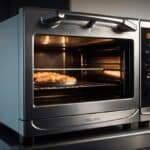Table of Contents
Remodeling or repairing an older home can be rewarding, but you may have some issues with the piping, as I discovered with our house. In many cases, the pipe material used in an older home may be unavailable, leaving you to combine different types of pipes.
You can mix copper pipes safely with other types of copper and PVC piping. You should not mix copper piping with galvanized pipes as they will corrode quickly due to a chemical reaction between the two metals.
Let’s get into more detail about what you can and can’t mix with copper pipes.
Can You Mix Copper and Galvanized Pipe?
I do not recommend mixing copper and galvanized pipes as they will corrode very quickly when they come in contact. To properly combine them without risking corrosion and damage, consider a dielectric union to keep the materials from touching.
You have to be careful when connecting two different materials together, especially when they come in contact with water.
In the case of copper and galvanized pipe, meeting these two metals creates an electrochemical reaction that causes them to corrode and clog very quickly (source: Science Direct).
To effectively connect these two metals via a pipe, you must set a barrier between them. You can do this with a dielectric union which helps block the connection between the two pipes allowing them to coexist without corrosion and blockages.
This Eastman Dielectric Union (available on Amazon.com) is fairly inexpensive.
Can You Mix Copper With Plastic or PVC Pipes?
You can safely mix copper with PVC or plastic piping as they will not negatively interact chemically. The only issue with connecting these types of pipes is the size. You will need an adapter.

Copper and PVC pipes work well together (source: Taylor & Francis Online). They will not corrode due to the material combination like copper and galvanized pipe. However, they are not without any issues.
Due to the size differences, you may run into problems physically connecting the two types of piping.
To properly join PVC and copper pipes, you need a connector. This will ensure that they meet securely without allowing any leaks. Remember that PVC cracks easily when twisted into hard material like copper.
You should always be careful when connecting PVC pipes to anything, as you can damage them easily.
Connecting these pipes to yours only requires one extra tool. There are a few different options to choose from.
First, a push-fit coupling like this GOUFIS Brass Coupling (available on Amazon.com) is great for simple, sturdy connections between PVC and copper pipes. This is a six-pack, and you must ensure they are the size you need before purchasing.
Alternatively, thread adapters like these FANOVO PVS Female Adapters (available on Amazon.com) can get you connected in no time. This is a 12-pack, and you can choose between three different sizes depending on your needs.
These are cheaper than the push-fit option. These are plastic. So, consider the push-fit alternatives if you want a different material. Both are available on Amazon.
Can Copper Pipe Types Be Mixed?
There are four main types of copper piping, and you can mix them all safely. Each type of copper piping has different pressure ratings and sizes. So, while it is safe to combine them, you need to be careful where you use each of them.

To best explain how and when to use the right copper piping, let’s break down the major differences between the four types.
- Type L. Copper piping type L (along with M) is great for home water piping because it is thick and has a good pressure rating. Type L is probably the best option because it is slightly larger than M and allows more water through faster.
- Type M. Similar to type L, type M is a little thinner and doesn’t allow as much water to pass through it. It is lighter than type L allowing for easier installation, and it is less expensive due to these differences.
- Type DWV. Copper DWV piping is not particularly strong enough to withstand high water pressure. So, you won’t commonly see it underground or in situations that require a lot of pressure. Typically, you can use type DWV for drains and vents rather than water piping.
- Type K. This is a sturdy pipe that you will commonly find underground. They supply water to your home. So, they are typically large and quite sturdy to handle intense water pressure.
How To Mix Copper Pipe Types
Since type DWV and type K have their own unique uses, you will most likely be attempting to combine type L and type M. If this is the case, you will be working with two slightly different sizes.
However, they are close enough in size to combine without much hassle. Use your typical combination methods to do this.
So, you can combine each type of copper pipe safely, but there will be limitations with size and where you can use them (source: Copper Developments Association Inc.). Check each type carefully and stick with types L and M for typical piping projects.
In conclusion, some pipe materials can mix just fine, but it is important to research before combining them. If you combine copper and galvanized pipes, make sure you use something between them to maintain corrosion resistance.










